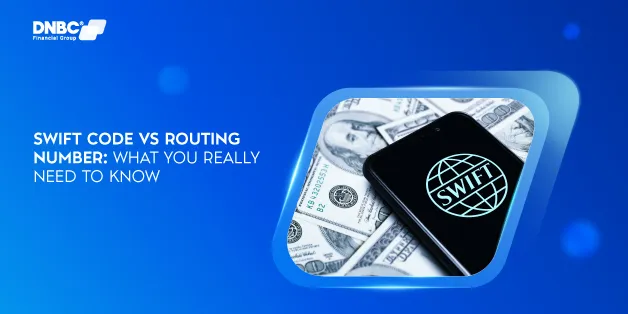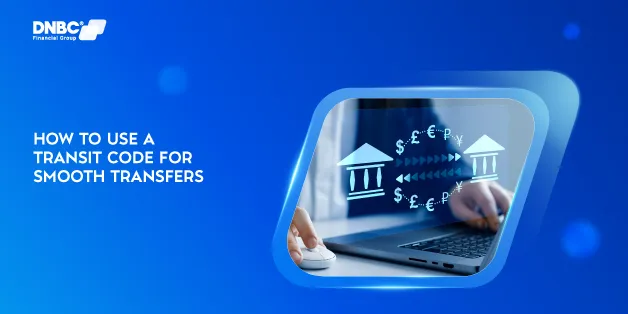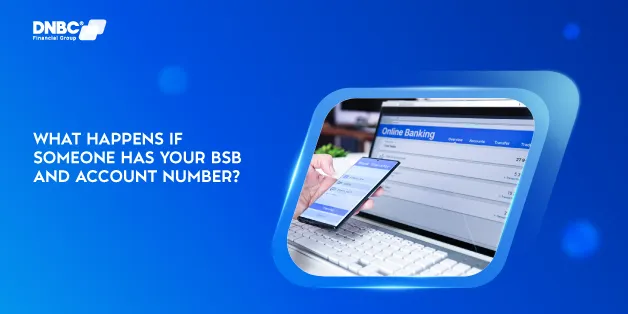- Home
- Blog
- Personal Finance
- Digital Payment Authentication: DNBC’s Trusted Solution
Digital Payment Authentication: DNBC’s Trusted Solution
Personal Finance
01 June 2024
DNBC Team
This article is a part of DNBCGroup Blog Center
Contact DNBCGroup for the technology news, tips, trends, and updates.
In today's digital landscape, payment fraud remains a significant threat. Cybercriminals are always finding new methods to exploit weaknesses and steal financial data.
To tackle this issue, two-factor authentication (2FA) has become a vital security measure. It gives a stronger defense by adding an extra layer of security specifically to fight against payment fraud for user accounts and transactions.
In this blog post, we will take a deep dive into the world of two-factor authentication (2FA). We will unravel what 2FA is, explore the various methods available, discuss how it enhances security for digital payments, and address the challenges we must overcome during implementation.
Understanding Two-Factor Authentication (2FA)
Definition
Two-factor authentication (2FA) is an additional layer of security that requires users to provide two different types of identification before accessing their accounts or authorizing transactions.
This surpasses the typical username and password setup, making it notably tougher for unauthorized individuals to get in.

Categories
The two factors required for 2FA typically fall into the following categories:
- Something You Know: This is usually your password, PIN, or answers to security questions.
- Something You Have: This could be a code sent to your phone (via SMS or an app), a physical security key, or a hardware token.
- Something You Are: This includes biometric factors like fingerprints, facial recognition, or iris scans.
Types of 2FA
One-Time Password (OTP)
One-time passwords (OTPs) are temporary codes sent to a user's smartphone or other device for identity verification. These codes can be delivered via SMS, email, or generated by an authenticator app. Users enter the OTP into the website or app within a short timeframe (usually a few minutes) to complete the authentication process.

Push Notifications
Push notifications are real-time alerts sent to a user's device (e.g., smartphone, tablet) when a login attempt is made on their account.
Typically, these notifications contain details about the login attempt, like the time, location, and device used. The user can then confirm the login attempt with a simple tap or click. Alternatively, they can deny the attempt just as easily.
Software Tokens
Software tokens are a type of two-factor authentication that uses an app installed on your smartphone or computer to generate time-based one-time passwords (TOTPs). Popular apps like Google Authenticator, Microsoft Authenticator, or Authy generate these codes, which typically change every 30 seconds.
When logging into a website or app that supports software tokens, you'll be prompted to enter the current code displayed in your authentication app.
Biometrics
Biometric authentication uses distinctive physical or behavioral traits of an individual to verify their identity. Common examples include fingerprints, face scans, iris scans, and voice recognition.

Other Methods
Besides the primary methods, there are other options available to enhance your account security.
- Phone Call Verification: You will receive an automated phone call with a unique verification code to enter on the login screen.
- Security Questions: You will answer personal questions that only you should know the answers to. These questions might include details such as your mother’s maiden name or the city you were born in
These methods offer alternative ways to verify your identity, particularly useful if you don't have access to your smartphone or preferred authentication app.
Benefits of 2FA in Digital Payments
Enhanced Security
A Google and Harris Poll revealed that a staggering 65% of individuals reuse the same password across multiple online accounts.
Overusing the same password across different accounts and profiles significantly increases the risk of breaches, which means cybercriminals will gain access to more financial accounts and personal information.
2FA significantly enhances security by adding an extra layer of protection to user accounts. Even if hackers manage to obtain a user’s password, they face greater difficulty gaining access due to the additional authentication step provided by 2FA. This helps bolster payment security and protect against unauthorized transactions and payment fraud.
Fraud Prevention
According to Google, two-step verification through SMS text messages can block 100% of automated bot attacks, 96% of bulk phishing attacks, and 75% of targeted attacks.
2FA adds an extra layer of security by requiring an additional step, like a one-time code sent to the user's phone. This measure prevents unauthorized individuals from making fraudulent transactions, which is especially important for online payments with a higher risk of payment fraud.

Increased User Confidence
The added security of 2FA significantly boosts user confidence in digital payment platforms. Knowing that their financial information and transactions are protected by an additional layer of security encourages individuals to embrace digital payment methods with greater trust. As more people adopt digital financial services, it can contribute to broader financial inclusion by granting access to a wider population.
Regulatory Compliance
In many regions, 2FA is mandated by financial regulations to enhance the security of online transactions and protect consumers from financial losses. Implementing 2FA can help businesses comply with these regulations and avoid potential penalties.
Reduced Financial Losses
By preventing unauthorized access and fraudulent transactions, 2FA can help businesses and individuals avoid financial losses due to cyberattacks and fraud. This proactive security measure positively contributes to the overall financial well-being of both parties.

Challenges and Solutions in Implementing 2FA in Digital Payment
User Convenience vs Security
Balancing between strong security and a user-friendly experience can be challenging when rolling out 2FA. While 2FA adds a crucial layer of protection, it can also be perceived as inconvenient by users, potentially leading to frustration and resistance.

Solutions:
- User Education: Proactively educate users about the importance of 2FA in safeguarding their accounts and financial data.
- Seamless Integration: Opt for 2FA methods that integrate smoothly into the existing user flow. Consider options like push notifications and biometric authentication, which can be less disruptive than manually entering codes from SMS messages.
- Adaptive Authentication: Implement adaptive authentication, which dynamically adjusts the level of authentication required based on the risk profile of each transaction. This approach minimizes friction for low-risk transactions while ensuring robust security for high-risk ones.
Overcoming Technical Difficulties
Integrating 2FA into existing systems can present technical challenges, particularly for businesses with legacy systems or complex IT infrastructures. Ensuring compatibility across diverse devices, managing user authentication data, and addressing potential integration issues can be complex.
Solutions:
- Phased Implementation: Roll out 2FA in phases, starting with high-risk applications or user groups. This approach allows for testing and fine-tuning before wider implementation.
- Choose the Right Solution: Select a 2FA solution compatible with your existing systems. Consider cloud-based solutions for simplified deployment and management.
- Technical Support: Ensure adequate technical support during and after implementation. Address any issues promptly for a smooth transition.
- Regular Updates: Keep the 2FA system up-to-date with security patches to protect against vulnerabilities.
How DNBC Applies 2FA in Global Money Transfers
At DNBC, we prioritize security in cross-border transactions to combat payment fraud. We're committed to safeguarding our clients' funds and sensitive information. That’s why we’ve seamlessly integrated robust two-factor authentication (2FA) into our global money transfer platform.
Here's how DNBC ensures the balance between security and user-friendliness:
Multi-Faceted 2FA Approach
DNBC offers various authentication methods for a robust 2FA approach. Users can choose between entering a code from the Twilio Authy App on their smartphone or desktop or receiving OTP verification via SMS or phone call.
User Education
We recognize that successful 2FA implementation relies on user understanding. DNBC provides comprehensive guidance and support to clients on activating and using 2FA effectively.

Continuous Security Enhancements
DNBC stays ahead of evolving threats by regularly reviewing and updating our 2FA protocols. Our commitment to security ensures robust protection for clients’ financial transactions.
With DNBC, you can trust that your global money transfers are not only convenient but also incredibly secure. Our multifaceted 2FA approach, combined with user education and continuous security enhancements, ensures a seamless and worry-free experience for all our valued clients, while significantly reducing the risk of payment fraud.
Related Articles:Your Trusted Partner
In your Digital
Journey
Free 1 - on -1 support
Free account opening fees
No hidden fees
Note: The content in this article is for general informative purposes only. You should conduct your own research or ask for specialist advice before making any financial decisions. All information in this article is current as of the date of publication, and DNBC Financial Group reserves the right to modify, add, or remove any information. We don’t provide any express or implied representations, warranties, or guarantees regarding the accuracy, completeness, or currency of the content within this publication.
Related posts

Difference Between Transit Code and SWIFT Code: Explained Simply
01 October 2025

Swift Code vs Routing Number: What You Really Need to Know
01 October 2025

How to Use a Transit Code for Smooth Transfers
01 October 2025

What Happens If Someone Has Your BSB and Account Number?
01 October 2025

Sending Money from Australia to New Zealand: A Complete Guide
01 October 2025